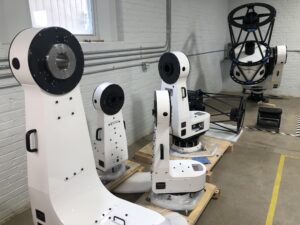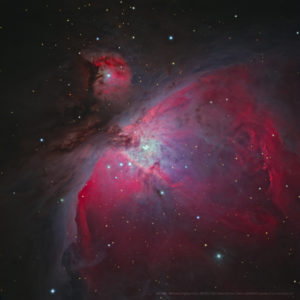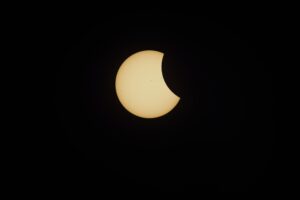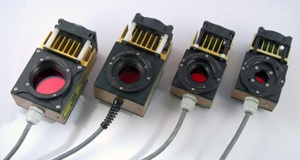Baader Planetarium Blog Posts
-
PlaneWave's L-series out of this World Tracking Performance
This entry was posted on July 14, 2021 Last modified on October 6, 2023.
The L-series lineup was born out of the dream to create the most versatile and cost-effective direct drive mount. Whether your goal is capturing beautiful astrophotographs that are out of this world, tracking fast moving satellites, or tracking objects that are not in orbit, the L-series will help you reach those goals all while being extremely simple to operate and maintain. The results of the L-series tracking performance whether at sidereal, or other rates utilized by astrophotographers, speaks for itself in these sample images captured by our customers. (1) M101 with CDK600 by Kurious George, (2) PK 136+05 with CDK500 by Jeff Lovelace, (3) NGC 4565 with CDK600 by Kurious George, (4) NGC 225 with CDK350 by Kevin Morefield, (5) Komet NEOWISE with CDK600 by...
-
Solar imaging with the TEC 140 f/7 Fluorite Apochromat
This entry was posted on July 2, 2021 Last modified on February 27, 2024.
On 2 June 2021, our customer Alan Jadanić sent us these amazing solar images taken with the TEC APO 140 f/7 Fluorite Apochromat (#1351005 , € 10680,-) . He used our kam unser D-ERF Energy rejection filter 135mm, a Solar Spectrum H-alpha Filter and the 2" Research Grade TZ-3 Telecentric System (3x focal length) (#2459257 , € 445,-) . Thank you! We would like to empahasise the multifunctional usability of the TEC APO 140 FL for DeepSky, visual observations and H-alpha. This optic can really be used day and night and is therefore a real all-rounder. Dear Mr. Baader, I have spent a few days with the TEC 140FL and a Solar Spectrum RG38 0,5Å filter and I must say that it is a very...
-
APF-R : Absolute Point of Focus
This entry was posted on September 27, 2017 Last modified on February 28, 2024.
APF-R goes online as official plugin in Adobe Photoshop Christoph Kaltseis is a Photoshop expert and an experienced astrophotographer. In recent years, he has developed APF-R (Absolute Point of Focus), an innovative image sharpening process in Photoshop that has attracted considerable interest among experts. The Hubble Space Telescope team has been using his method for over 2 years. Adobe Photoshop has now introduced the easy-to-use APF-R Photoshop CC plugin for Christoph's complex process. The tool sharpens images using APF-R with just a few clicks, even without much prior knowledge. The plugin has already proven many times that it can meet even the high quality standards in astrophotography. Read a very interesting in-depth interview with Christoph Kaltseis on Picture Instruments about his experiences in astrophotography. Christoph...
-
Baader's RASA 8" UFC telescope-side adaptor (Part 9)
This entry was posted on January 15, 2020 Last modified on February 27, 2024.
Smaller-Sized Filters with Baader UFC-System : It may only be an adaptor but this little piece of anodised metal will let you use a range of popular astroimaging cameras with Baader Universal Filter Changer (UFC) on Celestron's RASA 8 telescope thus allowing you to swap filters quickly and easily. Unlike the Baader UFC telescope adaptors for the 11″ RASA and RASA 36 that are mated to the corrector lens group cell face-plate and secured with the knurled retaining ring, this adaptor screws onto the male outer threads of the lens group housing itself. So you would remove the RASA 8’s retaining, the T-2 or C camera adaptor and then the clear filter, and then attach the UFC Base with its RASA 8 UFC adaptor in...
-
Will the FCCT also become available for ZWO cameras?
This entry was posted on February 11, 2022 Last modified on February 28, 2024.
Baader FCCT - Filter Changer Camera Tilter (Size: 3.4 MB) > 100 Downloads As a QHY dealer we do have access to all QHY cameras and when the design solution for such a "seemingly impossible product" like the FCCT I came up, we were able to use QHY cameras for all tests concerning RASA and FCCT adaptation and find out about all obstacles (there were many, one of them being the fact that not two RASA 8s have the exact same image plane position...). So for this combination we know that it works and we did add two 0.5 mm shims to enable the user to compensate for such fine focal differences. Now any 77mm diameter QHY-camera body featuring the 6.5 mm chip distance can...
-
Using Smaller-Sized Filters with Baader’s Universal Filter Changer (UFC) (Part 8)
This entry was posted on October 22, 2019 Last modified on February 27, 2024.
Smaller-Sized Filters with Baader UFC-System : We've been asked a few times recently on how to set up the Baader UFC for use with a DSLR and a range of wide-field imaging refracting telescopes. So we thought we would write a short blog on some ways this can be done. Let us start from the telescope side first. All the enquiries we have had, the wide field refractors have 2" barrel focusers, so there is our starting point. The telescope side of the UFC Base (to which everything else in the UFC system is connected to) uses Baader's S70 dovetail adaptors to allow the UFC to fit to telescopes. Looking at the UFC main diagram above Baader do a Baader UFC S70 / 2" SC-thread...
-
The June 10th Solar Eclipse
This entry was posted on May 13, 2021 Last modified on February 28, 2024.
In just under a month, an annular Solar eclipse will take place on the morning of Thursday June 10th. An annular eclipse occurs when the Moon passes between the Earth and the Sun but the Moon's apparent diameter is smaller than that of the Sun's due to the Moon's orbit being elliptical and it being further away from our Earth (at/near apogee) at that time. This leads to the outer parts of the Solar disc being "exposed" in an annulus or ring - often called "ring of fire". For those lucky enough to live in north-east Canada, western Greenland and far eastern Russia, will get to see the annular phase event which will last for a maximum of 3m 51s over north west Greenland. For...
-
QHYCCD 268M Monochrome CMOS Astronomical Imaging Camera: Overview and a first light from Bortle 7 skies
This entry was posted on April 26, 2021 Last modified on February 27, 2024.
Cooled CMOS imaging cameras for astronomical use have come a long way over the last few years and they are here to stay. The QHY 268M PH, BSI Cooled Medium Size APS-C Camera (#1931096 , € 2820,-) camera has been hotly anticipated and has become a focus for a lot of astrophotographers for its high specifications, build and image quality. The QHY268M is a monochrome cooled CMOS camera that utilises a very sensitive APS-C sized Sony IMX571 sensor. Typical of other QHYCCD camera bodies, the 268M features a matt black cylindrical design with, in this case, a red colored band around the body at the sensor end with QHYCCD’s name and logo and the camera model – QHY268 – clearly labelled. The body is 90mm...
-
Here comes Venus...
This entry was posted on April 23, 2021 Last modified on February 28, 2024.
Its hard to believe that a year has gone by since our Solar System neighbour Venus seemed to be around for ages and riding high in our evening sky during the late winter and spring months. This year, after its superior conjunction on March 25th 2021, Venus will once again start to become part of our evening sky (which makes observation of the planet more "convenient" for many than when it is an early morning object) until towards the end of the year. Unlike last year's evening appearance, for many locations this coming "visit" the planet will not be as high in the sky and having a low and or flat western horizon would be beneficial. However Venus, which is similar in size to our...
-
First Class H-alpha Solar Filters by SolarSpectrum
This entry was posted on September 8, 2021 Last modified on February 20, 2024.
Temperature controlled H-alpha-filters (lambda = 656,3 nm) with electronic temperature control (combined heating and cooling!) All SolarSpectrum H-alpha filters at a glance --> Such professional filters show an unsurpassed abundance of details by using the full aperture of the telescope and are thus the first choice for semi-professional observers / photographers as well as for scientific use. Solar Spectrum H-Alpha Filters give you an incomparable view of our Sun's eruptive surface. The SolarSpectrum filters follow the classical design and are placed behind the telescope in the focuser (although this requires a D-ERF energy rejection filter in front of the lens). In combination with a telecentric system tuned to the focal length of the telescopic, between 2/3s of the aperture and the full aperture of the...













